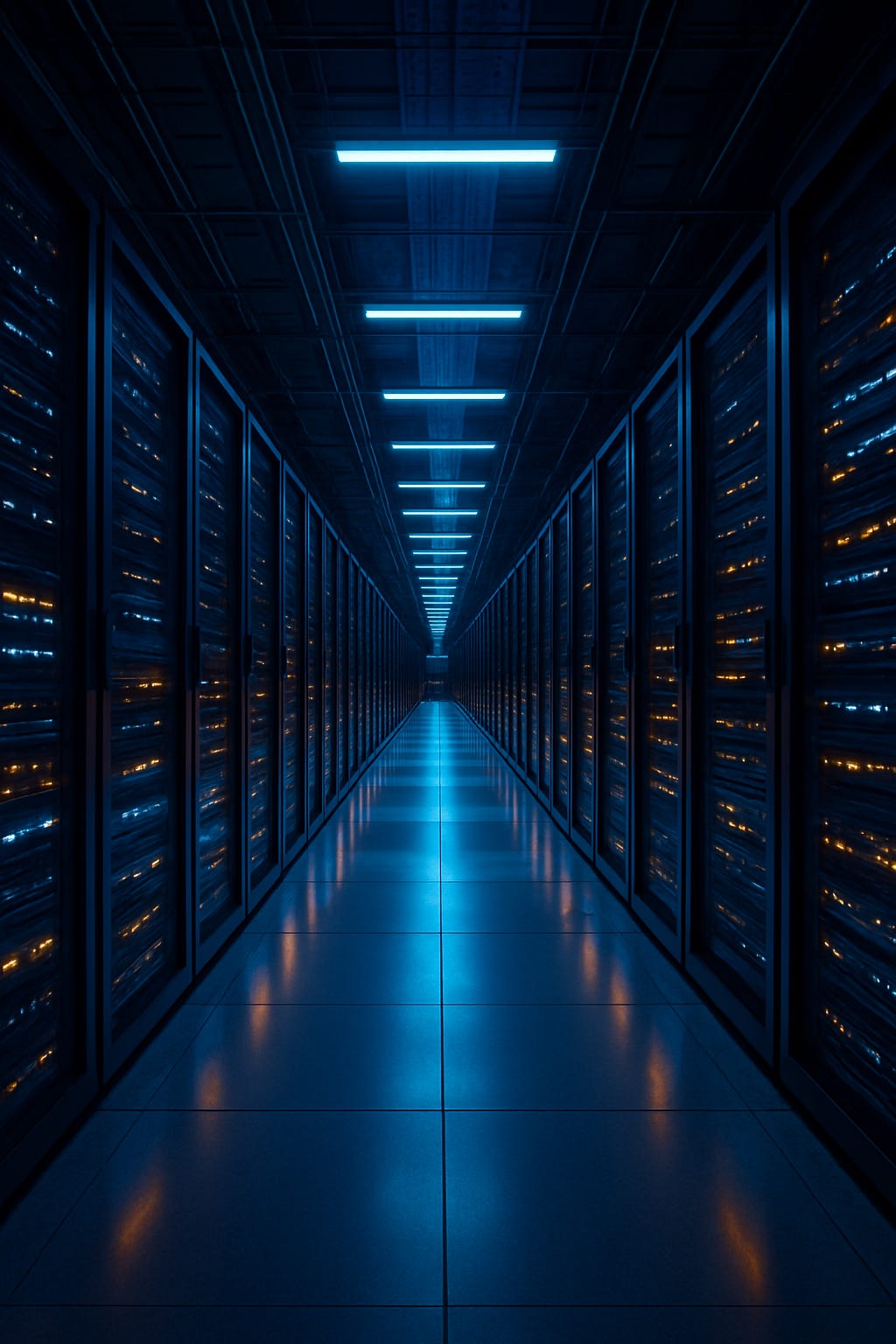"The AI Stack." Article 3: The AI Factories (The Cloud Layer)
By Michael Apemah in our new series "The AI Stack: Forging the Engine of a New World."
In our first two chapters, we explored the hardware that forms the muscle of AI and the models that provide its mind. But a mind and a muscle are useless without a vast, energy-rich environment in which to live and grow. For artificial intelligence, that environment is the Cloud.
The three giants of this domain—Amazon Web Services (AWS), Microsoft Azure, and Google Cloud Platform (GCP)—have become the AI Factories of the 21st century. They are the utility providers, the electric grid, and the supermarkets for AI, providing the raw computational power that fuels the entire revolution. This is the story of the third layer of the AI stack, a battle fought not with nanometers or algorithms, but with hundreds of billions of dollars.
The Capex Wars: A River of Gold Flows to NVIDIA
The single greatest force shaping the modern semiconductor industry is the astronomical capital expenditure (capex) of these three companies. To meet the insatiable demand for AI training, AWS, Azure, and GCP are engaged in a colossal arms race, spending a combined total of over $150 billion per year to build and equip data centers.
A huge portion of that river of gold flows directly to one company: NVIDIA.
These cloud titans are buying NVIDIA’s H100 and Blackwell GPUs by the tens and hundreds of thousands, creating entire new data center clusters designed for a single purpose: training and running the massive, “cathedral-style” closed models from OpenAI, Google, and Anthropic that we discussed in our last chapter. This spending frenzy is what propelled NVIDIA’s valuation into the trillions and created a supply crunch so severe that access to GPUs became a measure of a company’s strategic importance.
The Rebellion: Forging Their Own Silicon
Being utterly dependent on a single supplier for your most critical resource is a terrifying position for any business, let alone a trillion-dollar one. In response to NVIDIA’s pricing power and supply constraints, the cloud giants have launched a rebellion. They are leveraging their immense financial and engineering resources to design their own custom AI silicon.
Google’s TPUs (Tensor Processing Units): The pioneer in this space, Google has been building its own AI chips for years to power its search, advertising, and cloud services.
Amazon’s Trainium & Inferentia: AWS offers its own custom chips—Trainium for model training and Inferentia for the less-expensive task of inference.
Microsoft’s Maia: Microsoft has also entered the fray with its own accelerator, designed to power its Azure and Copilot services.
The goal of these custom chips is not necessarily to beat NVIDIA on raw performance. The goal is cost reduction and supply diversification. By controlling their own chip designs, the cloud titans can optimize them for their specific workloads and break free from NVIDIA’s stranglehold on the market.
The Foundry’s Golden Goose
Here is where the story of the AI Factories connects directly back to the silicon heart. From my perspective as a fab analyst, this custom silicon rebellion creates the single greatest business opportunity in the history of the foundry industry.
Currently, all of these custom cloud chips are manufactured by TSMC. This means the cloud giants, in their quest to escape dependency on one company (NVIDIA), have simply shifted that dependency to another (TSMC).
This makes them the most important potential customers in the world for Intel Foundry. If Naga’s newly integrated foundry machine can deliver a competitive and reliable 18A process, it offers these titans exactly what they crave: a credible, high-volume, US-based alternative to TSMC. Landing a deal to manufacture even a portion of Google’s next-gen TPU or Amazon’s Trainium chip would be a company-making victory for Intel Foundry, validating its entire turnaround strategy overnight. The capex war in the cloud is the ultimate prize for the winner of the foundry war on the ground.
The AI Factories of the cloud are where intelligence is being forged at an industrial scale. But this centralized power is only half of the story. The next great battle will be to move that intelligence out of the cloud and into our hands. In our final chapter, we will explore the AI Everywhere future and the rise of the Application and Agent Layer.


